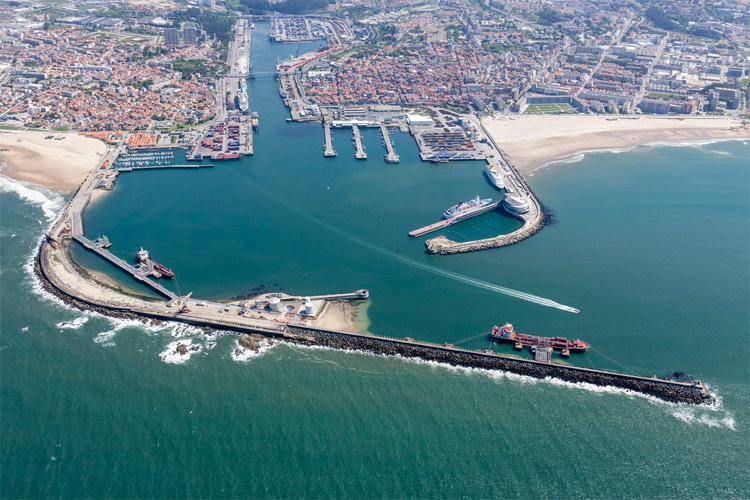The first stone has been laid, and dredging works have begun at the Port of Leixões in Portugal.
The city of Matosinhos, home to one of Europe's most consistent surf breaks, got underway with the construction of a 300-meter breakwater extension.
The controversial decision to build this giant stone wall in front of a popular seaside community put an end to all the voices who expressed their concerns against the project.
What initially became a movement led by local surfers and the Surfrider Foundation evolved into a much larger platform of people and organizations.
Residents, environmental organizations, local businesses, surf schools, and even neighborhood councils protested and highlighted the negative impact of the port's plans.
The construction of an additional extension to an already long breakwater will transform the local beach into a closed bay.
The widely frequented stretch of sand will only be exposed to rare south and southwest swells, resulting in stagnant, smelly, and heavily polluted waters.
The surf break, which was known to deliver over 300 days of rideable waves and attracted hundreds of water sports participants, will only be a memory of itself.
Matosinhos will join the list of surf spots that have been destroyed by human intervention.
The infamous list includes Jardim do Mar, the legendary big wave eradicated on the island of Madeira, Portugal, after the construction of a sea wall.
Hundreds of thousands of tourists and travelers from all over Europe and the world flocked to Matosinhos in search of consistent waves, sun, and food.
The large, sheltered beach is also one of the most frequented urban areas during the late spring, summer, and early fall months.
The white sand beach is shared by the cities of Matosinhos and Porto.
Porto is a UNESCO world heritage site and has been consecutively named Europe's best destination.
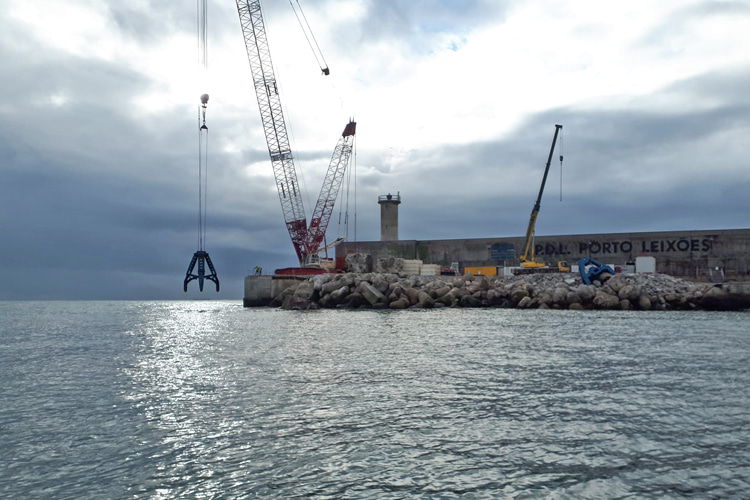
Decision-Making and Long-Term Accountability
The Port of Leixões is located in Matosinhos, a seaside community that promotes itself externally as the place where you can enjoy "the world's best fish."
It's hard to imagine how to sell that motto to tourists while simultaneously accepting the extension of port activities and being home to one of Portugal's two former oil refineries.
The answer is pretty straightforward - you can't and won't be successful in the medium term.
The balance between economic growth and quality of life has been an ongoing discussion and will always be.
But there are some equations that are clear and obvious, even to the ordinary citizen.
The idea of building a 300-meter breakwater extension in front of a city that has been attracting young residents and tourists raises several alarms.
Most of them are environmental threats, but there's also a larger picture that involves other economic variables.
Tourism, property value, general coastal businesses, etc.
From the environmental side of things, there are predictable and unpredictable consequences.
There will undoubtedly be more large container ships and cruisers casting a shadow in the coastal areas.
And in the event of an accident, disaster, or shipwreck, who will take full responsibility?
The local mayors and politicians that no longer serve the cities they ran?
The country's ministers who approved the project but no longer serve the nation? The port's management team, which has already been replaced by another government?
The first green light was given by Ana Paula Vitorino, minister of the sea (2015-2019) of the Portuguese government led by António Costa.
In 2019, when asked about the impacts of the structure on the coastline, Vitorino stated that they "will be studied in loco, in real-time, but nobody knows what they are or will be."
Luísa Salgueiro, mayor of Matosinhos, initially expressed concerns about the 300-meter breakwater extension.
But over time, her political loyalty to the party in power prevailed - her concerns were toned down and eventually disappeared from the public debate.
Pedro Nuno Santos, minister for infrastructure and housing, later and enthusiastically confirmed the 217-million euro project, 147 million of which was supported by public funds.
The master plan for expanding the shipping activity was designed and presented by Nuno Araújo, president of the Port of Leixões.
The port's executive stated that the construction of an additional 300-meter wall of stone was the only option available to allow the entry of large container ships and ocean liners.
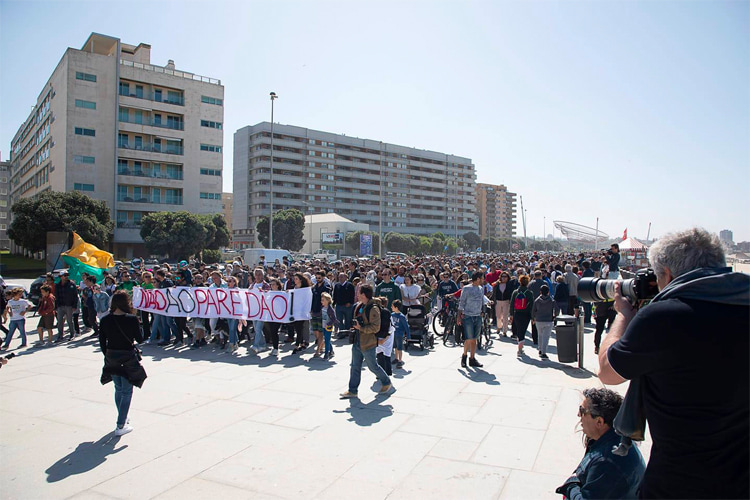
Enjoying the World's Best Fish in a Port City
Surfing and seaside leisure will be the least of the problems.
Yes, you probably won't be able to surf or swim in stagnant waters.
Yes, the town will no longer provide "the world's best fish."
Yes, the former beautiful sunset will be a thing of the past.
Yes, the horizon will be replaced by a large and high wall of stone and shipping containers.
Yes, the property value will decrease rapidly and dramatically.
Yes, people and businesses will move away.
Yes, there will be geomorphological consequences for one, two, or three communities located south of the project.
But the good news is that the Port of Leixões will consecutively beat new records. And that's just fine.
Ironically, the city's south boardwalk, created by the 2011 Pritzker winner, Eduardo Souto de Moura, was designed to give people the opportunity to cherish outdoor life and seaside activities.
From 2022 on, some of these outdoor enthusiasts might continue to do that, this time accompanied by heavy marine traffic and huge passing cargo ships.
There are several Blue Flag beaches in the region north of the Port of Leixões.
However, it is dramatically easy to spot and identify hundreds of microplastics per square meter in all of them.
The pollution of oceanic waters is not new.
But, for a country that has been promoting itself as Europe's ultimate sun and beach destination, the real work has not yet begun.
Portugal seems to only care about its national treasure - 1,115 miles (1,795 kilometers) of coastline - a couple of weeks before summer.
When the summer is over, the nation's beaches are left at the mercy of ocean pollution.
Portugal's golden era of tourism might be over.
You can't sell a beach paradise while simultaneously welcoming lithium exploration, offshore oil drilling tests, and extension of urban ports.
European tourists are increasingly aware of their many options, and the bar is rising for everyone.
In the end, it's all about making choices. Ideally, wise choices.
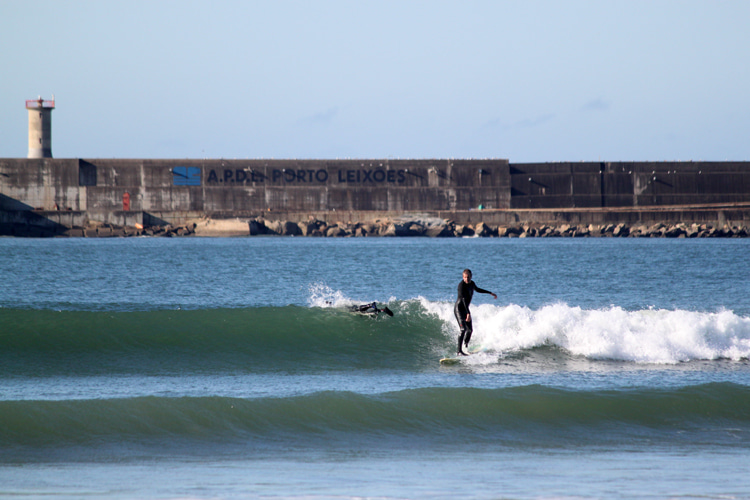
People Matter, People Don't Matter
Humberto Tomaz Silva, the founder of the "Diz Não ao Paredão" ("Say No to the Breakwater") movement, was one of the most active voices against the port's ambitious expansion plans.
His efforts eventually resulted in a petition reaching and being discussed in the national parliament.
Although nearly all political parties expressed concerns and preoccupation over the impacts of the breakwater extension, words did not translate into actions.
"It's sad that we are about to get a worse beach, fewer waves, and increased environmental problems," Humberto Silva told SurferToday.
"Unfortunately, neither the port management nor the government chose to reevaluate the project. Make no mistake - Matosinhos Beach will not be the same after this construction."
Silva's movement was one of the many that civil society organizations that fought and even asked courts to halt the process.
However, despite a few delays, the work started. Silently and without any major public announcements.
"The protest and rallies were really important to raise awareness and to show that we were not happy about this at all," underlines the founder of "Say No to the Breakwater."
"Thanks to those protests, there were some positive adjustments to the initial project. But it wasn't enough, and after that, we focused on trying to stop the project through dialogue and where it should matter."
"We teamed up with the Surfrider Foundation, and we took it to the Portuguese parliament to discuss it."
"Everyone agreed that this project needed more answers, and so it was recommended by all parties - except the one in charge of the government, of course - to stop the construction."
"Needless to say, they did not follow that recommendation."
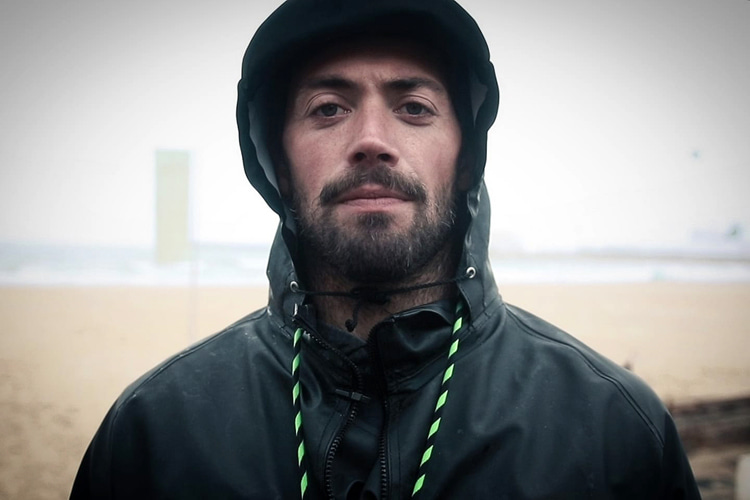
Living in an Industrial Site
Humberto Silva believes it's highly unlikely that something could still be done to stop or suspend the breakwater extension.
Were all environmental impact reports made available to the public?
"Yes, but there are a lot of questions to be answered," adds Silva.
"This is actually a big project split into three stages: the extension of the breakwater, the dredging of the seafloor, and the extension of a container terminal."
"All of them serve one purpose - to make Leixões port bigger, more profitable, and able to receive bigger ships, which to a certain extent is understandable and desirable."
"The issue with this port, in particular, is that it is the 'most urban' port in Portugal, deeply embedded in the city, so we need to be extra careful and really study the consequences of its expansion."
Humberto Silva has already witnessed the short-term impacts of the construction works.
"A couple of weeks back, due to dredging, the population was alarmed after a dense dark foam washed ashore in Matosinhos and Porto beaches," concludes the activist.
"Port of Leixões assured that it was normal and it was not pollution but failed to provide proof. They just keep saying that the 2017 samples were fine."
"I believe we will face the impacts throughout the whole process."
"But as soon as the 300-meter extension is concluded, with more ships coming, more trucks carrying cargo, and more containers stacking up, we will feel a little less in heaven and a bit more in an industrial site, with poor water quality, poor air quality, uglier landscape and of course, less waves."
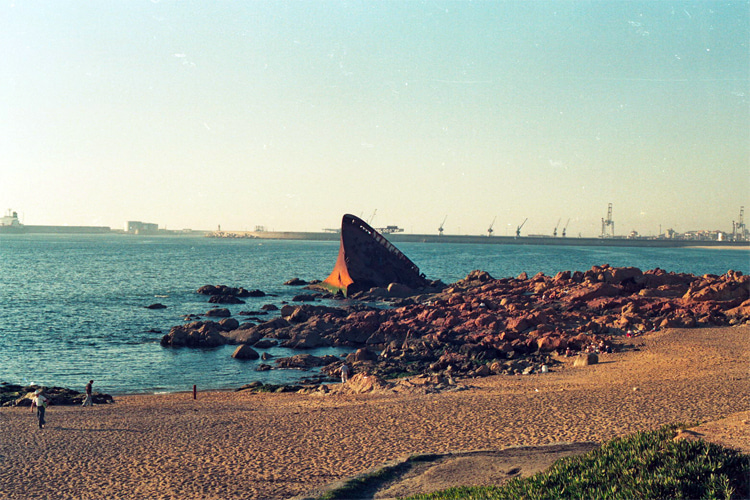
The Jacob Maersk Tragedy
On January 29, 1975, at 12:30 pm, the Danish oil tanker Jakob Maersk hit a rock while trying to enter the Port of Leixões.
Seconds after the crash, the engine room exploded, splitting the 85,000-ton ship in three, setting it ablaze and killing seven crew.
For three days, 50,000 tons of crude burned with flames that reached 100 meters in height, filling the city with thick black smoke and causing poisoning in many residents.
The central area and the stern sank, and the bow was left afloat and washed ashore a few days later.
It remained there for 20 years.
The explosions split all the tanks and reservoirs of the oil tanker, with the crude being spread over a large area.
The collaboration between the minister of fisheries, the Navy, the army, the shipowner - Shell - and the locals helped mitigate the oil spill's impact.
Nevertheless, about 15,000 tonnes of crude landed on the coast.
According to the Organisation for Economic Co-operation and Development (OECD), the catastrophe cost $2.8 million.
The bow of Jacob Maersk remained very close to Porto's iconic landmark - Castelo do Queijo - as a sad memorial of one of the most horrible tragedies that took place in the city in recent history.
